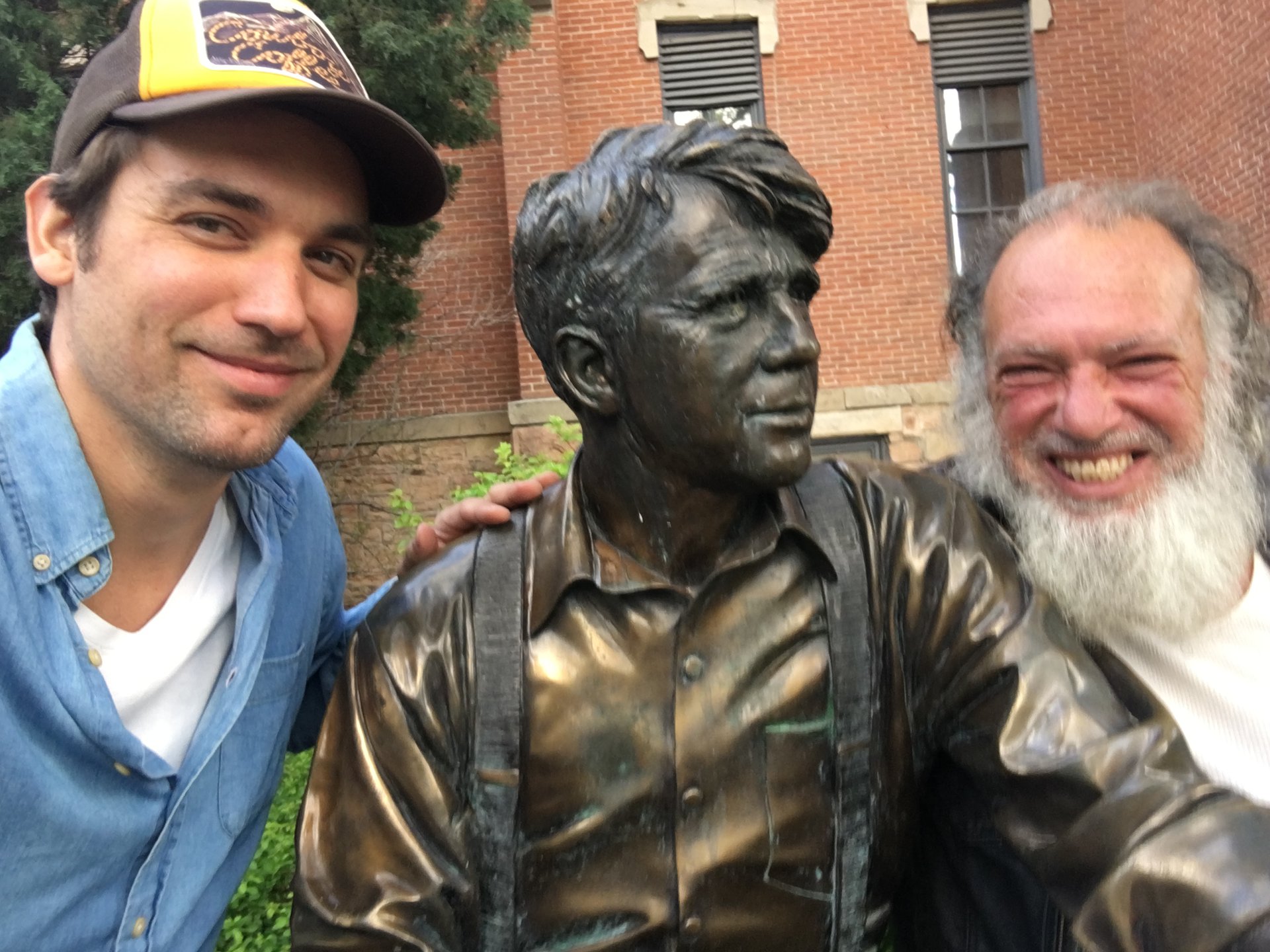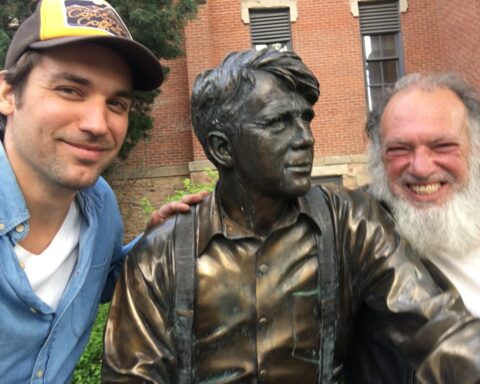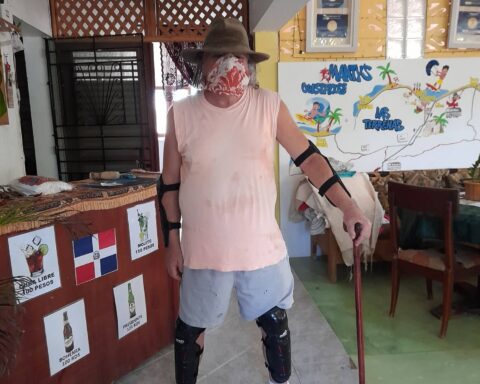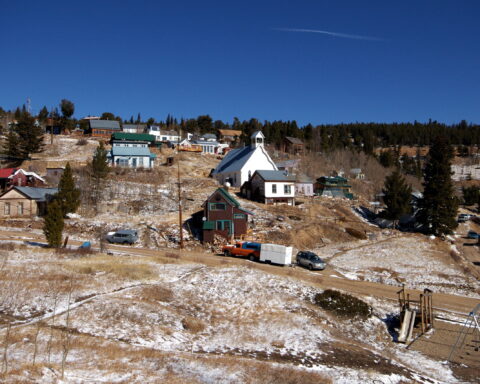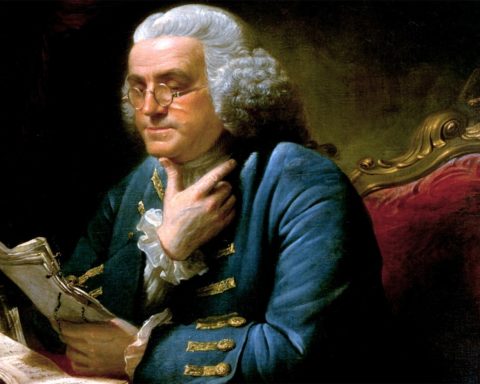Columbus encountered a paradicial place.
And then he turned it into hell.
The Taino have been declared extinct, many times.
And yet,
with a population of 44 million,
the Caribbean has more people of Taino ancestry
now,
than it did in 1491.
And that only begins to describe
how the Taino,
and the aboriginal template abides.
Two thousand years before Columbus’ arrival, the Taino had reached a critical mass in achieving something that could be called, ‘civilization.
Their agriculture intensified.
More acres were under cultivation for staples,
for yucca,
maize,
sweet potatoes,
beans,
squash.
The settlements become much larger.
The pottery became much more sophisticated.
The Caribbean became a busy long distance network.
People regularly traveled long distances by dug- out canoe.
Families maintained close ties with each other across the Carribean.
The first Europeans who encounter them estimated
there were millions of Tainos.
There were only 10’s of thousands of them.
But the population was probably overestimated because of social, cultural consensus across a vast area.
There was a continuum between
Mayan and Taino Culture/Civilization.
Taino and Mayan canoes, some with more than 30 paddlers ventured throughout the Caribbean,
to what is now Mexico and Guatemala
and to what is now the Southeastern United States.
There was an elaborate economic system involving trade of such things as obsidian, and other precious minerals, precious stones, axes, tools, stucco pottery, cacao, and other medicinal plants, cotton, rubber, birds and feathers.
Mayan ball courts and religious practices were adopted by the Tainos.
The Taino ball game, Batey, closely parallels the Maya ball game of Pok a Pok.
The name Batey appears in Classical Mayan inscription to refer to the ball game.
The Mayan and Taino courts were similar,
as was the way of scoring.
Opposing teams had 10 to 30 players per team and used a solid rubber ball.
Normally, the teams were composed of men,
but occasionally women played the game as well.
The Taíno played in the village’s stone-walled center plaza and rectangular ball courts.
The most elaborate ball courts are found at chiefdom boundaries.
It was all about keeping the ball in the air,
without using hands.
The scoring was similar to present day volleyball.
For the Taino,
Batey was an important way of avoiding military conflict.
It was vital for maintaining Taino civilization
]Caciques made large wagers on the game.
Perhaps this Dominican Republic cultural history explains why the country is one of the preeminent baseball powers of the world.
Although most caciques were male, the society was a matriarchy.I
It was a social system in which females held the primary power positions in roles of political leadership, moral authority, social privilege and control of property.
At the same time the Caribs, a related but cannibalistic, martial culture, was invading Taino territory.
So many Taino women were captives of the Caribs,
the Caribs spoke Taino.
Through the history of the Carribean women have been in a similar situation.
They are the dominant political, economic and social force of the culture.
And yet,
there is much pressure to place women in positions of concubinage.
Today a major business of Cuba, the Dominican Republic is the business of sex.
Yet in spite of the patriarchal authority of European colonialism,
matriarchy in the Caribbean,
and the Dominican Republic persists.
The society that Columbus encountered was polygamous.
Men had multiple wives.
And yet,
women had multiple husbands.
This was needed to maintain an adequate population for resisting the invasion of the Caribs.
Taino Indians worshiped the Zemi, (gods and nature spirits,)
and their dead ancestors,
to have a good afterlife
and to sustain the life force in this world.
They believed the Zemi and the dead had the power.
They had the power over the living world.
They had hallucinogen-induced cohoba ceremonies, which were thought to put shamans in touch with the spirit world.
They had religious ceremonies in the stone plazas of their cities that involved mass drumming, dancing, singing, and feasting.
The guiro, maracas and many other Caribbean percussive instruments are Taino instruments,
or have evolved from Taino instruments.
The ceremonies would end with mass vomiting to eliminate all impurities inside their bodies and spirits.
Columbus described them as being ‘naked as the day they were born.’
“They will give all that they do possess for anything that is given to them, exchanging things even for bits of broken crockery,” he noted. “They were very well built, with very handsome bodies and very good faces….They do not carry arms or know them.
‘They traded with us and gave us everything they had, with good will…they took great delight in pleasing us. They are very gentle and without knowledge of what is evil; nor do they murder or steal. Your highness may believe that in all the world there can be no better people… They love their neighbours as themselves, and they have the sweetest talk in the world, and are gentle and always laughing.
Columbus reveals himself by noting’
“….They should be good servants.
On the night of December 24, 1492 Columbus’ largest ship, the Santa Maria, became stuck on a sandbar and coral reef off the northern shore of the Island of Hispaniola
The ship couldn’t be saved and was dismantled.
There was no room on the remaining ships for 39 men.
A cacique named Guacanagari, helped Columbus and his men build a small fort out of the remains of the Santa María.
Among those left behind was Luís de Torre,
a converso,
who spoke Arabic, Spanish and Hebrew
and had been brought along to interpret.
Diego de Araña, a cousin of Columbus’ mistress, was left in charge.
The 39’s orders were to collect gold and await Columbus’ return.
Conversos were Jews who had been forced to convert to Catholicism.
But their conversion was always suspect.
They were accused of secretly practicing Judaism.
Columbus was of Jewish ancestry.
But his Catholicism seems to have been sincere.
Around 20% of the people
of the Iberian Peninsula,
about 20% of Latin America,
are of Jewish ancestry.
Luis de Torres was Columbus’ close friend.
Columbus brought ten Taino captives back to Spain.
But they were reduced by disease to six.
They were put on display.
Columbus writes “in the first island…I took some of the natives by force, in order that they might learn and might give me information of whatever there is in these parts.”
A young man from Guanahani, this first island claimed by Columbus, caught the queen’s eye.
Columbus would adopt the Taino adolescent, and he would become known to history as Diego Colon, the adopted son and interpreter for Columbus on his second voyage.
His new fleet arrived at La Navidad on November 27, 1493, almost one year after it had been established.
He found the settlement burned to the ground.
All 39 were dead.
Guacanagari blamed the massacre on other tribes.
Columbus believed him.
He killed the hundreds that Guacanagari accused.
Later, Guacanagari’s brother,
a chieftain in his own right,
told a different story.
The Spaniards had become all about
violence,
rape,
oppression
and enslavement
of the Taino.
Luis de Torres is said by some to have,
unsuccessfully tried,
to control the Spaniards.
Guacanagari attacked.
He was seriously wounded.
The Europeans were wiped out
and the settlement burned to the ground.
The massacre may have happened around August or September of 1493.
Taino were required to deliver an impossible amount
of gold
of cotton.
If it wasn’t delivered
Tainos had their hands cut off,
and were left to bleed to death.
The Spaniards were urbanized people.
They came from places that had huge numbers of domesticated animals,
living with huge numbers of people.
The Spaniards had developed immunity to pathogens.
The Taino hadn’t.
They were decimated by pathogens from Europe.
They were worked to death in the mines and fields.
In 1503, the Taino agreed to provide a large amount of casabe,
the coarse, flat Taíno bread made from yucca
for the Spaniards.
The Taino were loading the bread onto a Spanish galleon
–fulfilling the treaty.
A Spanish officer had an attack dog on a leash.
The dog began acting up.
Another Spanish officer jokingly suggested that the dog attack one of the Indians.
“Tomalo!”
“Take him!”
said the Spanish officer holding the dog.
The dog disemboweled a Taino,
who was a cacique.
The Indians retaliated.
They killed some Spaniards.
Santo Domingo sent an expedition.
They killed as many as 7,000 men, women, children, old people.
They cut the hands off those they captured,
and left them to bleed to death.
They lined up the dead in long rows.
Bartholome de las Casas,
the priest,
bishop,
historians,
social reformer,
who described this massacre,
also described how Spaniards made bets on who could cut a man in two,
with one blow.
They tore babies from their mothers’, and dashed their heads against rocks, he reports.
They impaled the bodies of babies, and their mothers,
on one stake.
They burned many alive.
The Taino population fell rapidly.
The official census records of 1514 show that 40 percent of Spaniards on Hispaniola had Taino wives.
Yet in 1550 the Taino were declared extinct.
The Taino matriarchs had organized.
They worked with the Catholic clergy.
They made sure that any union between a Spaniard and a Taino woman,
was a proper Catholic wedding.
Many of the Spaniards weren’t Spaniard.
They were the Guanche,
the aboriginal people,
of Tenerife
and the Canary Islands.
This reinforced the aboriginal template.
The mestizo off-spring were listed as Spaniards.
The Spaniards brought African slaves to supplement the diminished Tainos.
The Africans were often aboriginal people.
Many Mayans were enslaved and brought to Hispaniola.
Escaped slaves found sanctuary in remote Taino settlements.
The conquest of Mexico
and the subsequent Mexican gold rush
made many leave Hispaniola.
The people who remained were more likely to be of aboriginal ancestry,
further reinforcing the aboriginal template.
As many as 20% of the Caribbeans population
is of American Indian ancestry.
Rural people have known of this ancestry,
the vestiges of Taino tradition,
Taino language.
Yet urban people have ridiculed the aboriginal template as a thing of backwards country people,
rubes.
This is changing.
Across the Caribbean people are rediscovering
their inner Taino.
People are more than their DNA.
The aboriginal template is more than DNA.
It is community consciousness.
It is the context of personal experience.
It is the way the world is imagined.
The way people make sense of the world.
The way people
make sense,
appreciate
the diversity within.
Perhaps the cultural, social consensus,
across a vast area,
the continuum between
cultures/civilizations
that was the Caribbeans past,
will some day be
the Caribbean’s future.

